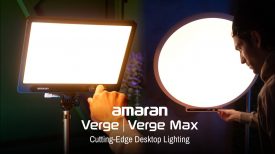The Kessler Shuttle Dolly has been around for about a year year now, and was featured on Newsshooter when it was first launched, but now I’ve got my own and had a chance to really get stuck into it I thought this would be a good time to give it a bit more of a detailed review.
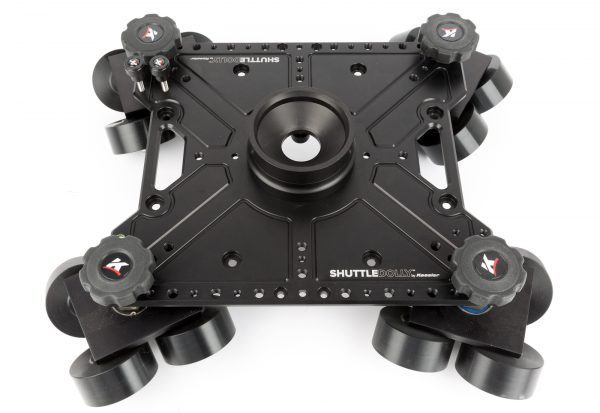
First up, there is no doubt that this is a seriously high-end bit of kit. I’ve previously thought Kessler’s gear sits somewhere in the middle: better than most “prosumer” stuff, but maybe not quite as high-end as some kit from the big commercial/drama oriented grip brands, and priced accordingly so: halfway. However, I can confidently say that the Shuttle Dolly sits in the latter category. It’s a modular and extremely versatile camera slider system that takes the form factor of a dolly on rails. The advantages of this sort of slider over other high-end all-in-one sliders (such as those by MYT and Ronford) are two-fold. Most importantly it can be adapted to any length, either by linking together multiple sections of Kessler’s new “Kwik Rail”, or by buying bespoke lengths of rail. The second advantage is its payload (rated to a whopping 50kg), strength, and durability: it has a much wider centre of gravity than most alternatives (more similar to installation/robotics systems like Furios) which makes it much more stable with larger cameras and longer lenses. In the video you can see I’m using it with a Sony F5 and Fujinon XK6 lens which together are 60cm long, and there is no wobble at all coming from the dolly, wheels, rails or tripod head. Any slight wobble I experienced (which is noticeable in a few shots in the video) is purely a side-effect of my choice of stands, and even then only occurs when I push it aggressively. Larger stands/tripods or Kessler’s Kwik Rail stand system would eliminate this entirely. With a larger tripod head and a Mitchell plate this would be totally rock solid.
The other key feature of Kessler’s Shuttle Dolly is it’s modularity. It’s so easy to build it up and add additional components: a “keeper” to stop the dolly falling off the rails, a brake to stop it slipping, a drag unit to finely dial in and add resistance to the motion, and most importantly, a motor. The Shuttle Dolly can be adapted for anything from basic side-to-side motion all the way up to repeatable motion control, start/stop timelapse movement, and multi-axis programable moves with FIZ control (with the addition of their very attractive Cine Drive system).
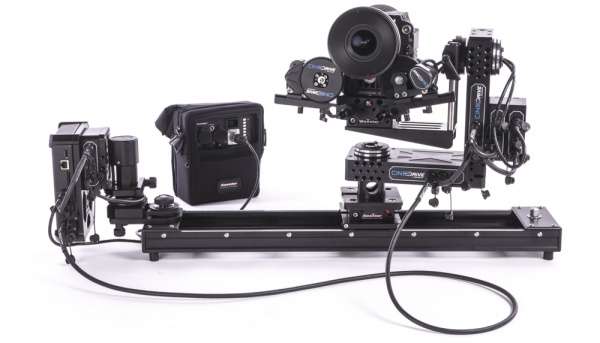
The Shuttle Dolly comes in a core package called the “Starter Bundle” which includes the dolly plate, wheels, two end clamps and stand supports, and your choice of 100mm bowl adaptor, Mitchell plate mount, or cheese plate mount (you can get all three). This comes really neatly packaged in a compact box (on the right). Any additional components will come in a second box (on the left of the photo below).
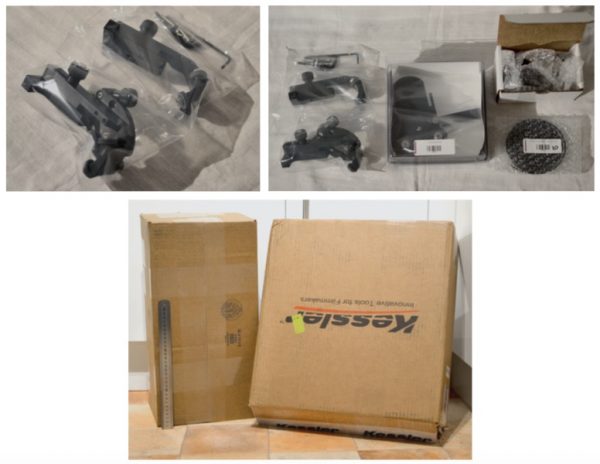
One thing you can’t do (at least not obviously straight out of the box) is use the Shuttle Dolly at angles steeper than a few degrees. At least not on stands anyway. On the ground this should be fine as the end clamps and centre supports all have adjustable large rubber feet to help get the track stable in any position. But with the supplied components this would be difficult on stands. I’m sure it could be modified with an angle adaptor, if a strong enough one could be found. It may also be possible when using Kessler’s Kwik Rail as legs. Of course, when angled this is where the drag unit and brake system will prove particularly useful.
Kessler’s Kwik Rail system (bespoke pieces of aluminium in lengths suitable for both track rail and legs, with machined threaded ends to link pieces seamlessly together) has only just been released, and wasn’t available when I got my Shuttle Dolly. As such I decided to get my own rails.
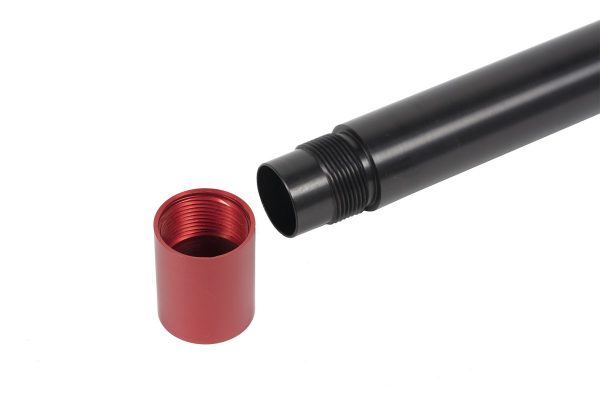
The Shuttle Dolly can be used with any speed rail (scaff pole) with a diameter between 1-1/4″ (31.75mm) and 2″ (50.8mm), and Kessler recommend what is called “Schedule 80″ tubing (this is a rating for pipe to determine it’s pressure rating and thus wall thickness). I went for 1-1/2″ diameter aluminium pipe with a 1/4” thick wall. Thanks to John Charalamous at Metal Supermarkets UK for helping me select this. Although maybe not as light as Kessler’s Kwik Rail, it’s a very comfortable weight: nothing to complain about. And sure, it doesn’t have the very cool machined threads the Kwik Rail has, but the 170cm length is perfect for the majority of my needs, and it’s really tough: no flex. It’s good to know that if I ever need shorter or longer lengths I can always get these on a bespoke job-by-job basis, as they’re not too expensive.
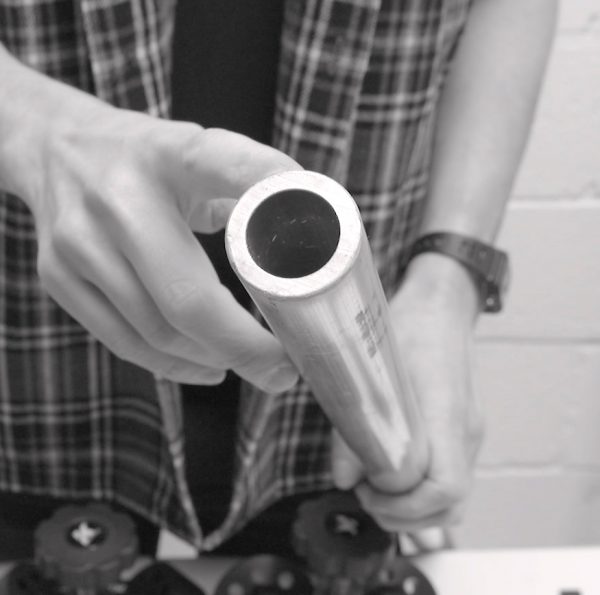
As for stands, after much looking around to choose the best option for me (in terms of price and size) I went for Avenger A1010CS baby low boy stands. I considered the Matthews Slider Stands – and they would have been the ultimate solution… but would have worked out at nearly twice the price.
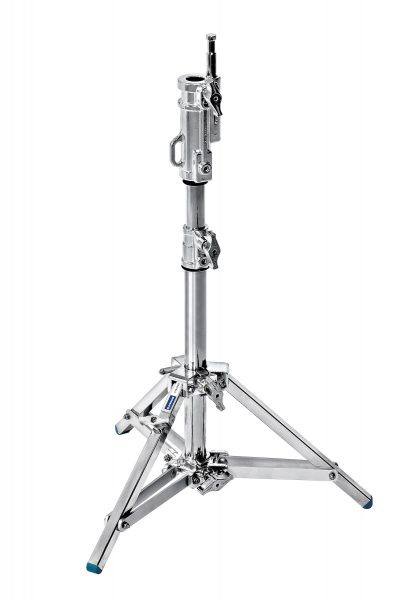
The Avenger baby low boys are perfect for my particular needs: the base folds out to a little wider than the span of the Shuttle Dolly Rails, their payload is 30kg per stand, they feel really solid, and they fold up nice and small. There were two important considerations for me when choosing these. The first was the minimum and maximum height: they had to go low enough so that with the rails, dolly, tripod head, and camera factored in I’d be able to get the lens at a good height for a seated interview.
The second key factor when choosing those stands is that I wanted them to be compact enough so that I could fit everything into one case. Kessler do supply their own hard case specifically for the Shuttle Dolly, but I decided to get my own case so I could fit my two baby low boy stands in as well. For this, I went with a Peli Storm IM2975 which fits the entire Shuttle Dolly kit, plus the two baby low boys: so, everything except the rails. I built a wooden shelf/divider with 10mm plywood (which I plan to cover with 6mm Plastazote or Neoprene) to help separate the main dolly unit from the stands and end clamps, and prevent any components from getting bashed or damaged.
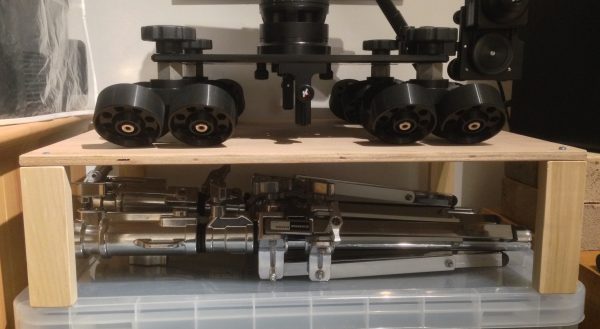
As mentioned in the video, an important tip to point out is that because the Shuttle Dolly is a US made product, everything is in imperial sizes. This is mostly fine, as a lot of measurements for products in this industry are imperial, however a minor issue I stumbled across is that the supplied knob for tightening your 100mm bowl tripod head to the dolly’s bowl is 3/8″-16. If, like me, you are using a European brand (mine is a Sachtler head), you may find that this won’t fit. Neither will the knob that comes with your tripod, as typically they’re a bit larger and so will get stuck on the finger bolts that attach the 100mm bowl adaptor to the dolly plate. This isn’t really a problem (just something to be aware of and prepared for), as Kessler do supply metric M10 versions as an additional item, both regular threaded and dual start (for tripods with a double threaded tie-down stud).
At the time of writing this review I understood the Kessler Shuttle Dolly to be quite unique in the market. It is equally as high end as offerings from brands like MYT and Ronford (but, of course, with a different and more heavy duty and versatile form factor), and in my opinion, much more capable, advanced, and modular than other rail type sliders such as the Dutti Dolly, Dana Dolly, and Tango Roller. However as I was finishing up this review, I went to BSC Expo in London and came across a surprisingly very similar product from another manufacturer: Sk8plate.
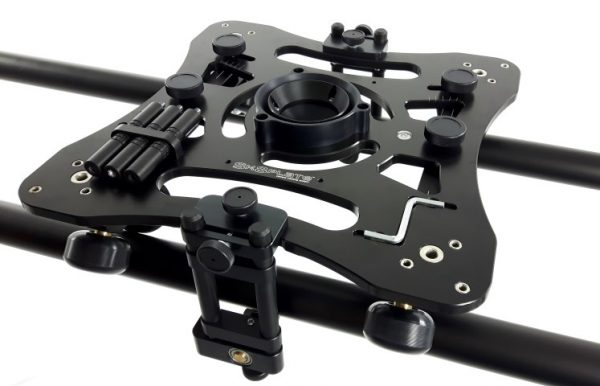
I spent a long time looking at their offering and had a long think about how it compared to the Kessler Shuttle Dolly. Although on first impressions they are weirdly similar, there are a few notable differences. The Sk8plate system has a really neat bag to take all the parts, with padded dividers and velcro tie-downs: more compact and lighter-weight than Kessler’s case. Similar to Kessler, they’ve done a neat job with extendable rails. My early impressions tell me Kessler’s rails are a better design, but the Sk8plate ones are a fair bit cheaper. But, in my opinion, rails are just rails, and by getting my own I got cheaper still, and just as good in terms of strength and smoothness… just not extendable. Where Kessler offer a heavy duty flight case for their rails (and it can take several pieces), Sk8plate offer a lightweight padded bag which takes just two pieces. I think Sk8plate’s bag is more attractive to me, as for the most part I’ll only ever carry two rails around. But for anyone working on bigger projects with bigger rigs, or flying with their kit, then Kessler’s rail case is definitely the better option. I like the two big handles on the side of the Kessler Shuttle Dolly. The Sk8plate has these too, but they’re a bit obscured by their equivalent of the keeper/grabber/motor system which seems like a strange design error to me. The Sk8plate dolly has adjustable feet on the dolly itself: a neat touch which enables one to remove the wheels and use the whole dolly as a hi-hat. Bit they’ve also added features which allow it to be used as a table top “skater” dolly… which in my opinion has lead it to becoming a little clunky and over-engineered, and I don’t feel that style of dolly is very popular or controllable anyway. In addition to being very modular and versatile the Kessler system feels a little more considered, streamlined, and aesthetically “clean”. One really neat aspect of the Sk8tplate is that it’s motor system works without needing a belt, and as such, it’s a bit more compact. It’s also a lot cheaper than Kessler’s offerings, but as such, although it’s fine for basic side to side moves, it’s a lot less powerful: no repeatable motion control, no programming of start/end points, certainly no option to be built-up to a full multi-axis system, and I wonder if maybe it’s not quite as strong. Very attractive indeed for basic needs, but for high-end use (repeatable moves, programable motion control, multi-axis etc), the Kessler motion options (particular with the additional Cine Drive) are the way forward. Motors and motion aside, they’re both excellent, but after thinking about it a lot, I personally do prefer the Kessler Shuttle Dolly: it just feels more robust, heavy duty, and a bit tidier in it’s design.
Many thanks to Kessler and also to LiveFi in London for use of their studio to film the review video.
Latest news

CETA Software Insights– a reporting tool that consolidates essential financial, operational, & production data into a single, streamlined interface

Godox Releases KNOWLED MG2400R: High-Output RGBWW LED Light Fixture Designed for Precision and Large-Scale Production
